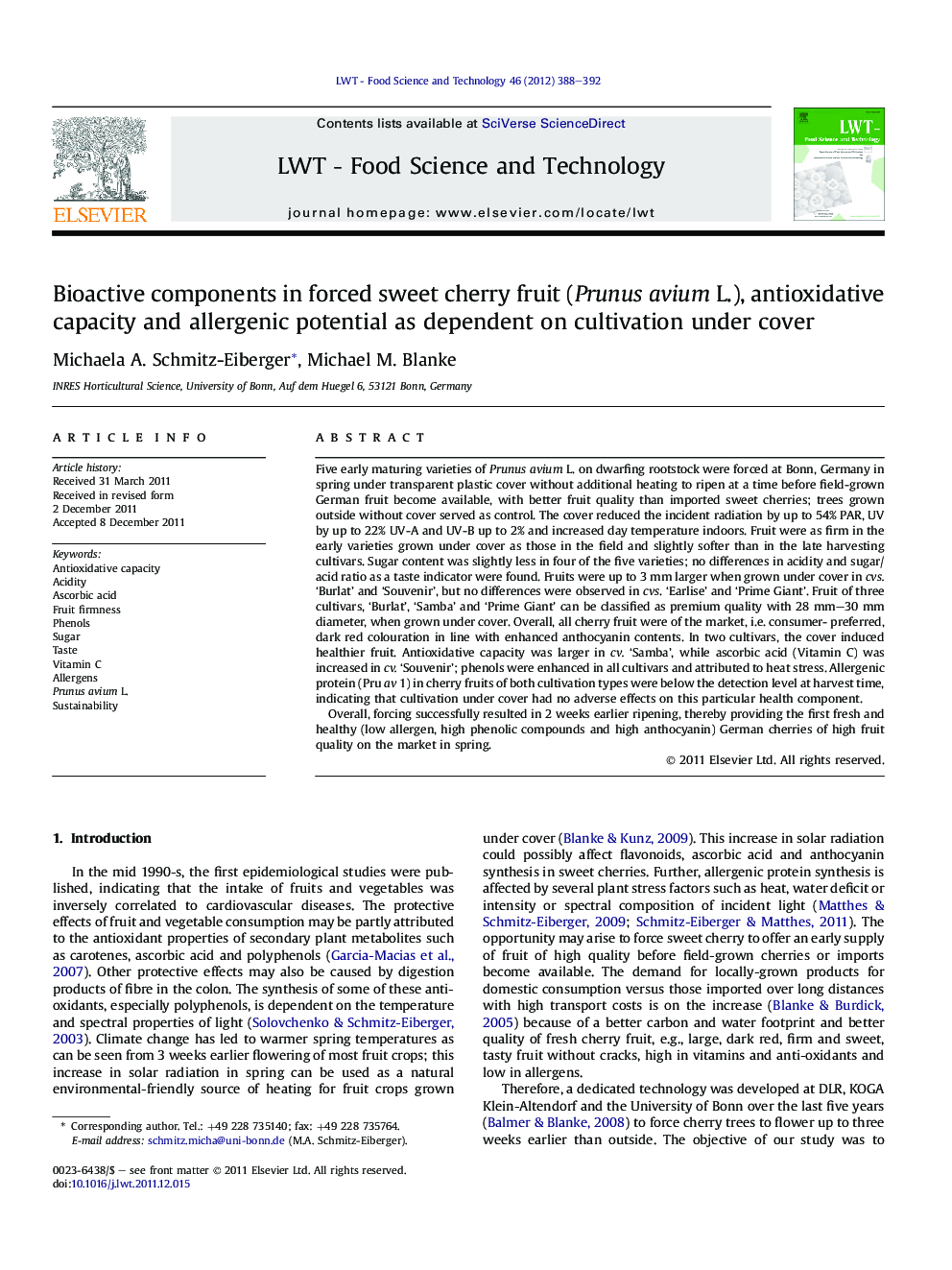| کد مقاله | کد نشریه | سال انتشار | مقاله انگلیسی | نسخه تمام متن |
|---|---|---|---|---|
| 6405694 | 1330923 | 2012 | 5 صفحه PDF | دانلود رایگان |

Five early maturing varieties of Prunus avium L. on dwarfing rootstock were forced at Bonn, Germany in spring under transparent plastic cover without additional heating to ripen at a time before field-grown German fruit become available, with better fruit quality than imported sweet cherries; trees grown outside without cover served as control. The cover reduced the incident radiation by up to 54% PAR, UV by up to 22% UV-A and UV-B up to 2% and increased day temperature indoors. Fruit were as firm in the early varieties grown under cover as those in the field and slightly softer than in the late harvesting cultivars. Sugar content was slightly less in four of the five varieties; no differences in acidity and sugar/acid ratio as a taste indicator were found. Fruits were up to 3Â mm larger when grown under cover in cvs. 'Burlat' and 'Souvenir', but no differences were observed in cvs. 'Earlise' and 'Prime Giant'. Fruit of three cultivars, 'Burlat', 'Samba' and 'Prime Giant' can be classified as premium quality with 28Â mm-30Â mm diameter, when grown under cover. Overall, all cherry fruit were of the market, i.e. consumer- preferred, dark red colouration in line with enhanced anthocyanin contents. In two cultivars, the cover induced healthier fruit. Antioxidative capacity was larger in cv. 'Samba', while ascorbic acid (Vitamin C) was increased in cv. 'Souvenir'; phenols were enhanced in all cultivars and attributed to heat stress. Allergenic protein (Pru av 1) in cherry fruits of both cultivation types were below the detection level at harvest time, indicating that cultivation under cover had no adverse effects on this particular health component.Overall, forcing successfully resulted in 2 weeks earlier ripening, thereby providing the first fresh and healthy (low allergen, high phenolic compounds and high anthocyanin) German cherries of high fruit quality on the market in spring.
Highlights⺠A novel cultivation system is proposed to force cherries using solar radiation without fossil fuels. ⺠Forced sweet cherries were of class 1 category (> 28 mm), sufficiently firm with dark red colouration. ⺠Forced cherry fruits were of excellent inner quality with good taste (17% sugar). ⺠Fruits were rich in anti-oxidants such as vitamin C, but without allergenic protein (Pru av 1). ⺠Fruits were attractive, tasty and healthy produce from environmentally-friendly production.
Journal: LWT - Food Science and Technology - Volume 46, Issue 2, May 2012, Pages 388-392